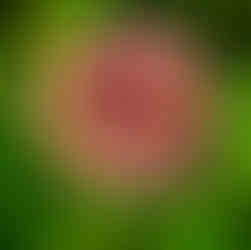Pollinator Pairings April 2022: Monarchs and Milkweeds
Daniel Meakam, Tufts Environmental Studies intern
Welcome to the first in a series of features highlighting some of the incredible pollinators that can be found at the Somerville Community Growing Center, as well as the native plants that depend on and coexist with these special species. This series was triggered by a generous gift to provide botanical signage in our Pollinator Garden. It also builds on the work of Earthwise Aware engaging volunteers in observations of biodiversity. And we are grateful to the support of Tufts Environmental Studies interns who are assisting with this project.
You may be familiar with the magnificent monarch butterflies that can be seen every year across North America, but were you aware that the survival of these iconic insects depends entirely on their access to one particular plant family? Plant species from the Asclepiadaceae family, better known as Milkweeds, are the unsung heroes necessary for the survival of the monarch butterflies, and as such their habitats are critically important to protect. As the name would suggest, common milkweed (Asclepias syriaca) is among the most abundant of the 115 species in the milkweed family, and can be found in fields, forests, and cities throughout the eastern United States, including in our very own Somerville Community Growing Center.
Growing in large clusters up to five feet tall, the common milkweed has quite a distinctive appearance. Their long, narrow stems are punctuated by large, 8-inch leaves, and dozens of small flowers, each no more than half an inch wide, bloom in unison to form near-perfect spheres at the tops of each plant. Ranging from white to pinkish and purplish in color, the flowers emit a highly fragrant scent that attracts and provides what is essentially an all-you-can-eat buffet for hundreds of animal species, including caterpillars, beetles, ants, aphids, bees, and wasps. It is very common to see several of these species feeding and interacting simultaneously on any given common milkweed plant.
Beyond all other animals, however, monarch butterflies have a special and vital relationship with the common milkweed. The common milkweed is often the sole source of cardiac glycosides for monarch larvae which they require to mature, and the plants continue to provide a source of food to monarch caterpillars as they grow. Aside from nourishment, the cardiac glycoside compounds contain toxins against which the monarchs are immune, but which prevent them from being eaten by birds and other potential predators, who are vulnerable to the toxins. In return, monarch butterflies play a large role in spreading milkweed seeds, reinforcing the resilience of the plant and returning some of the favors they receive to help the milkweeds thrive.
Monarch larvae are indeed so dependent on common milkweed for their development that recent declines in monarch butterfly populations can be directly traced to habitat loss and herbicide use. Fortunately, due to several of its unique features, the common milkweed is considered to be a “fugitive species”, meaning it has the potential to thrive in environments that have been greatly disrupted by human activity, including urban areas. As a result, it is a fantastic plant to include in one’s own pollinator garden. Although the common milkweed is resilient and can grow in some shade, they are most happy in direct sunlight. Once planted, they grow readily with very little maintenance. But be careful! The common milkweed can quickly overtake a patch of land where it is introduced, so caution must be taken to ensure it remains within a desired area. But with the necessary steps taken, the common milkweed is a beautiful, easy, and incredibly beneficial plant to include in any pollinator garden. By attracting monarch butterflies and hundreds of other animal species, cultivating the common milkweed in our cities has the potential to restore animal populations and reinvigorate entire ecosystems.
This has been for years the goal of the Somerville Community Growing Center. As part of the early planning phases of the Growing Center renovation project in 2016-2018, community residents advocated for integrating native plantings throughout the renovated space, as well as designating specific “Pollinator Garden'' areas in the final design. These have been implemented with the assistance of local horticulturist David Falk, aided by our own Site Coordinator Paula Jordan and Site Committee member Tori Antonino and Garden Team volunteers. The installations included site prep, planting of hundreds of native plugs, seeding other species, and adding young shrubs and understory trees around the Center. The Orchard Area was also planted largely with species native to New England.
A citizen science nature conservation non-profit partner, Earthwise Aware has been doing regular inventories to document the plants phenology and the presence of insects and other pollinators, in addition to offering regular learning sessions for all interested. We continue to learn about the relationships between native plants and the (mostly) small creatures that are deeply connected to them. A generous specified donation has allowed us to purchase labels for the Pollinator Garden and other natives in the Center to help visitors learn more about how these plants can flourish in an urban environment, bringing us beauty and the joy of discovering the interconnectedness of nature. Please join us on this ongoing journey and exploration! Each month we hope to share information on one pairing of a pollinator and native plant host, as well as some local resources to learn more.







































Comments